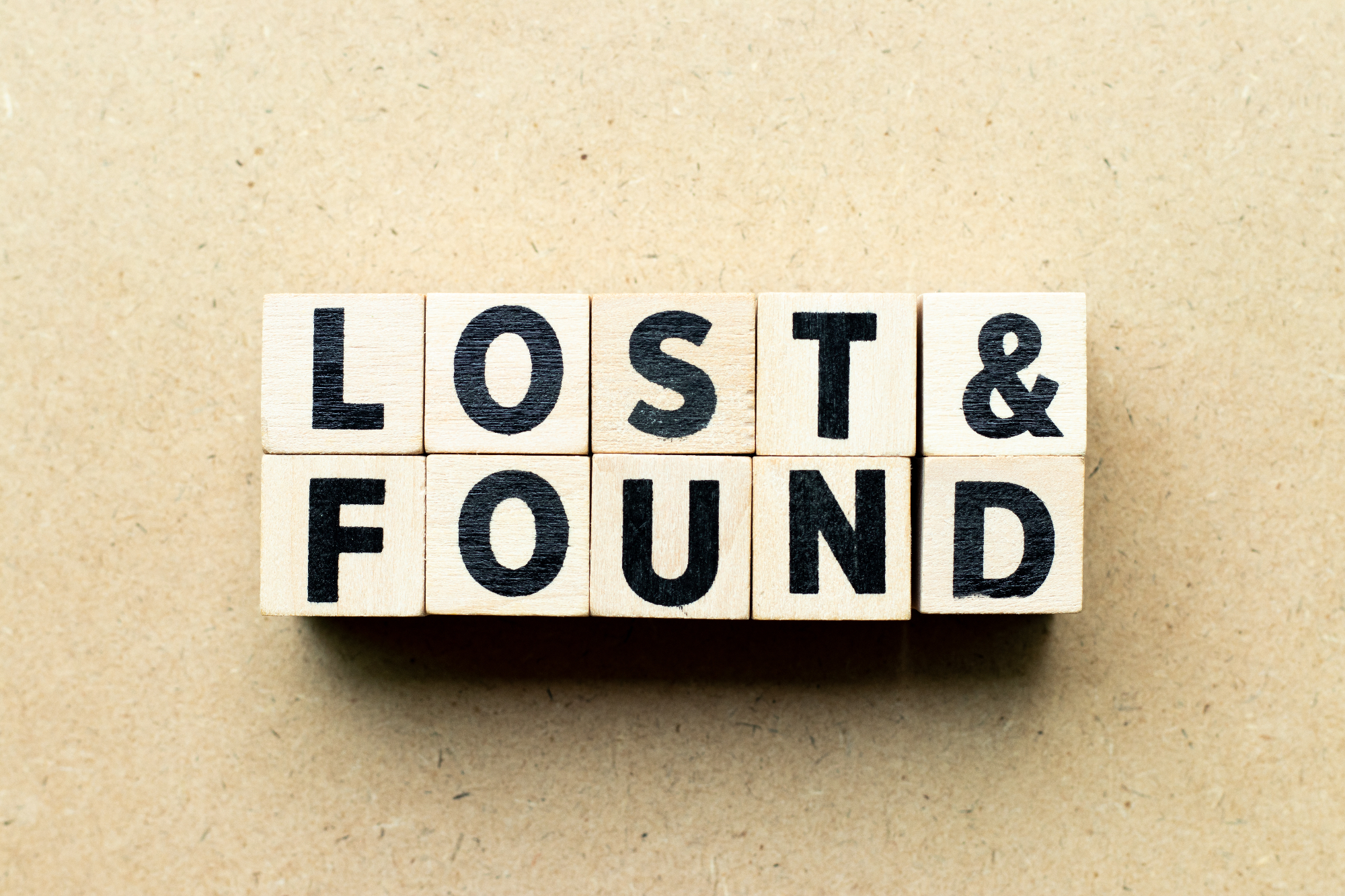
The concept of 'lost and found' can be understood as an organized approach towards helping people retrieve their misplaced or lost items. It is commonly implemented in public places like shopping malls, airports, and schools where there are higher chances of leaving belongings behind. The system works on the principle of honesty and responsibility, encouraging people to return items they find to a central location or authority. For instance, consider a scenario where someone loses their mobile phone in a mall. If an honest individual finds it, they would ideally hand it over to the mall's lost and found department which then assumes the responsibility for returning it to its rightful owner. This process often involves tracking down owners through various means such as announcements or checking device information if possible. Thus, 'lost and found' services provide a secure avenue for retrieving lost property while promoting ethical behavior among the public. However, users must remember that not all items may be returned due to various factors such as dishonest finders or lack of identifying information making it crucial to always keep personal belongings securely.
In the digital age, the concept of 'lost and found' has gained a substantial degree of significance and complexity. It's no longer just about physical objects left in public spaces; technology has broadened its scope to include electronic devices like mobile phones, tablets, or laptops which contain personal data that could be misused if fallen into wrong hands. For instance, let's delve into a real-life story that beautifully captures the spirit of 'lost and found'. A lady named Emma once lost her phone while shopping at a bustling mall during holiday season. The phone was not just an expensive device for Emma but also housed precious memories in form of photos and videos. She reported her loss at the mall's 'lost and found' department with little hope for recovery. Meanwhile, another visitor at the mall – a teenager named Jack – spotted an unattended phone near a store. Realizing it was misplaced, he decided to take it to the lost and found office. The staff there were able to connect this incident with Emma’s report because she had wisely saved her contact details on her lock screen wallpaper along with note stating reward for returning it back if found. They contacted Emma who was beyond overjoyed upon hearing that her phone had been located safely. This story underlines how vital these services are in our modern society where losing items can have far-reaching implications beyond their monetary value due to possible data theft or identity fraud risks associated with them. Moreover, this narrative illustrates certain key aspects related to lost-and-found protocol such as responsibility of finders—and importance of providing identifying information—which we mentioned earlier in our guide. Beyond merely serving as repositories for lost items, these departments play pivotal roles in promoting honesty among people by providing them opportunities to demonstrate responsible citizenship—just like Jack did when he chose not only find but also return what wasn't his rightfully! This is why it is important that we all understand and appreciate role played by such systems in our day-to-day lives. It's not just about recovering what is lost; it's also about reinforcing trust, integrity, and civic responsibility within our communities.
Recognizing the significance and complexity of lost and found in our lives, we can also appreciate its evolution over time. Initially associated with tangible objects, it has now extended to digital assets like mobile phones that harbor immense personal data. This shift underscores a new reality where the risk of losing such items isn't merely monetary but could lead to potential data breaches or identity thefts. Let's consider another real-life incident that reinforces this point – a gentleman named Richard was on his daily commute when he misplaced his phone on the subway. His heart sank at the thought of losing not just an expensive gadget but also sensitive information stored within it. However, a kind-hearted passerby named Lucy found Richard’s phone on her seat after he had left the train. Noticing that there were contact details displayed on the lock screen along with an appeal for returning if found, she decided to do her part as a responsible citizen. She took it upon herself to contact Richard and arrange for him to retrieve his lost possession from her directly rather than turning it into transit authority's lost-and-found office due to urgency of situation considering possible misuse of private data contained in phone. This story reaffirms how significant these systems are today, given our reliance on technology; they have become more than just places where lost items are kept until claimed by their rightful owners—they're platforms encouraging honesty and mutual trust among strangers. The importance of providing identifiable information is once again highlighted here—as evidenced by both Emma’s and Richard’s experiences—since it facilitated their device’s return even before reaching any formal department dealing with lost belongings. Just as Jack did earlier, Lucy demonstrated integrity by choosing not only find but also return what wasn’t hers rightfully! This highlights how every individual plays crucial role in making these systems work efficiently while fostering sense community responsibility. It's no longer about recovering what is simply 'lost'; instead, it underlines value trustworthiness civic duty amidst digitization our lives.